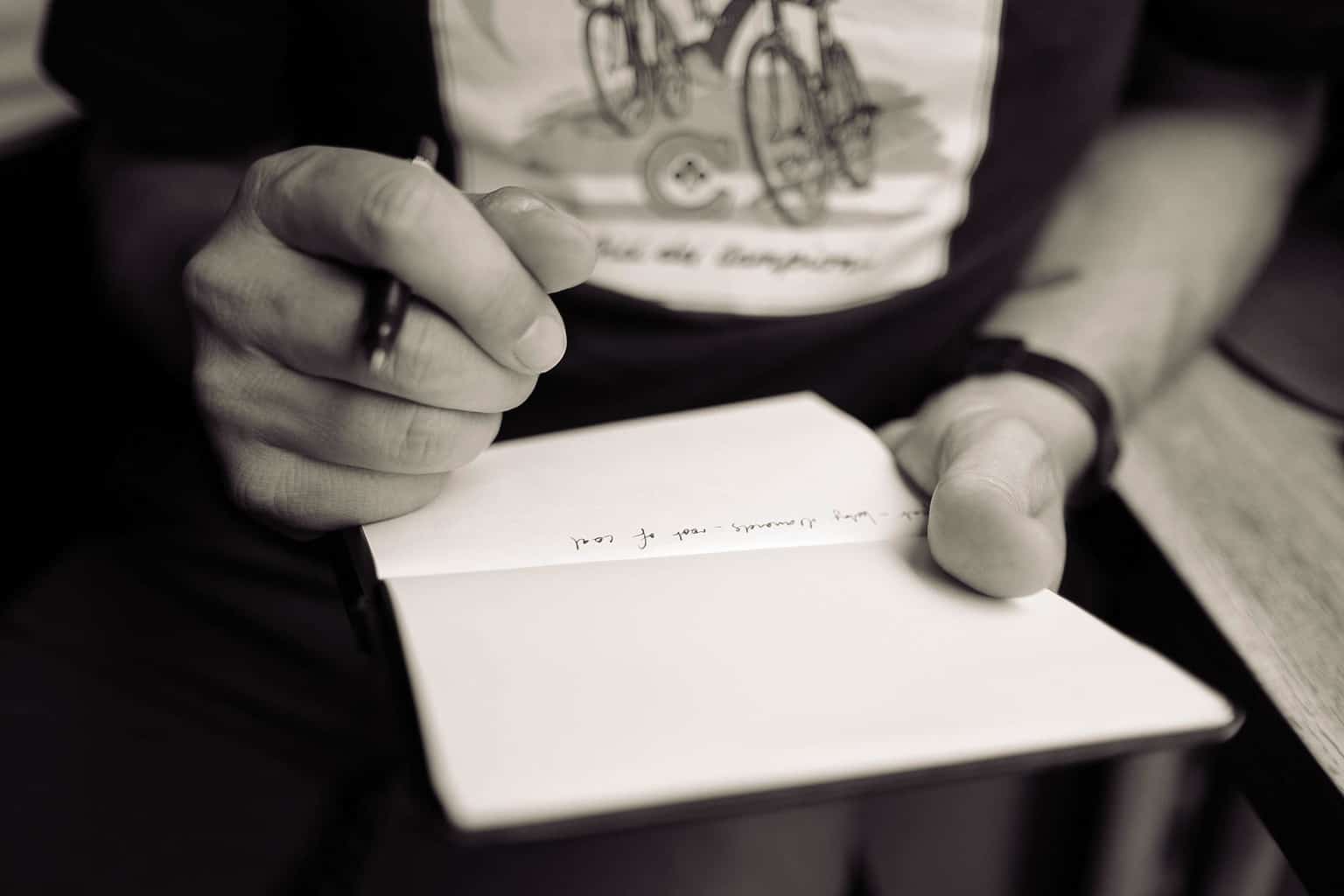“Don’t shop when you’re hungry.” That’s a good piece of advice that gets passed around. Are you familiar with it? Have you ever thought about why?
If you shop based on what you want at this moment, you’ll end up with a refrigerator full of nothing but lime La Croix and frozen cheese pizza. I’m not going to judge you for living on a diet of carbonated water and cheese— we all have to work with what we’ve got — but I will argue that some vegetables and fruit might be a nice addition.
But they’re hard to buy when you’re starving and just want to go home, drink bubbles, and eat cheese.
Unfortunately, most goal setting and resolutions are made in a similar manner. We get to the end of the year and decide everything we want for the next year.
But we’re bad at predicting what we will want a year from now. We make choices based on how we feel right now, even when we try not to.
I recently learned that a judge in court is much more likely to make a lenient decision after a meal. The lucky defendants whose cases get seen after a break in court are 65% more likely to have a favorable outcome.
A judge’s job is to make decisions not based on how he or she feels. Yet the statistics show a bias. When he or she is fed and happy, she’s more kind.
And then we get to the end of the year, and you expect that you can properly set the trajectory of your next 12 months in an unbiased and positive way.
Think about this:
- What space are you in?
- How do the holidays leave you?
- Are you happy?
- Are you worn?
- Are you tired?
- Are you rejuvenated?
All of these things affect what you want right now and your ability to predict what you’ll want 12 months from now.
As the father of an almost 14 month old, who splits the care-taker responsibilities, right now I want sleep. And it’s hard to imagine that 12 months from now I’ll want something other than sleep.
The problem is that in 12 months, a lot can happen— including some sleep.
I shouldn’t set goals based on what I want right now.
There are at least four better options.
How to Fix Your New Year Resolutions
1) Set goals based on who you want to be, not what you want.
A better way to set goals and resolutions is to think first about who you want to become instead of what you want. This bases your goals in character and action, not in results. These goals are more flexible and allow you to adapt your strategy for achieving them (more on that here).
2) Set goals based on what you want to feel.
Danielle LaPorte pioneered this concept in her book the Desire Map. The simple idea is to think first about what your want to feel, and then to think backwards to what makes you feel that way. The good news of these kinds of goals is that there are lots of different ways to feel the ways we want to feel— even ways that we may not imagine.
3) Set goals that are iterative.
This has a lot to do with how you go about pursuing your goals, but the idea is that your goals have to be adjustable. You have to be able to adapt and iterate on your goals as you progress through your year. Goals cannot be stagnant. When they are, they quickly become irrelevant. This is the bases of the goal setting process I use.
4) Set goals based on where you’ve been, as well as where you’d like to go.
A year end review is the cornerstone of my goal setting process. It helps anchor my vision for what’s to come on the territory that I’ve been walking. It gives depth and meaning to the goals I’ve set. Any other way of setting goals feels thin in comparison.
No matter how you go about setting your goals, do it with kindness, and consideration to where you are, who you are, what you want to feel, and where you’d like to go.
Want to set better goals and achieve more next year?
I created a tool exactly for that. It’s called Operating Instructions, and I’d like you to consider how it can help you make more happen in the next year. Check it out here: operatinginstructions.co


